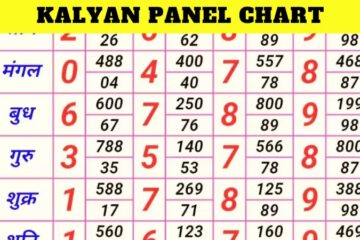
Kurla, a bustling neighborhood in Mumbai, is historically known not only for its industrial growth and diverse population but also for being a significant hub in the intricate web of Bombay Satta, a form of gambling deeply rooted in the city’s socio-economic fabric. The term “Satta” in this context refers to betting or wagering, and over the decades, Bombay Satta has evolved from traditional betting practices into a sophisticated network with deep societal implications.
Historical Background of Kurla Bombay Satta
The origins of Satta in Mumbai can be traced back to the pre-independence era when it began as a simple betting game. Initially, it was based on the opening and closing rates of cotton transmitted from the New York Cotton Exchange to the Bombay Cotton Exchange. With time, the system became more complex, involving numbers drawn from a matka, a large earthenware pot, leading to the term “Matka gambling.”
Kurla, strategically located in Mumbai, became a significant center for these operations. Its industrial landscape and dense population provided an ideal cover for such clandestine activities. The transformation of Satta from a simple betting game to a full-fledged underground economy can be attributed to the post-independence industrial boom, which saw an influx of workers looking for quick means to supplement their income.
The Mechanics of Bombay Satta
Bombay Satta, particularly in areas like Kurla, operates on a straightforward principle but with intricate execution. The game involves betting on numbers, and the winning number is drawn from a predefined range. Initially, numbers were written on slips and placed in a pot, hence the name Matka. Over time, the process became digitized, but the core mechanics remained the same.
Participants place their bets on numbers of their choice, and a draw is conducted at specific times to determine the winning number. The winnings are substantial, often multiplying the initial bet several times over, which explains its allure. However, the odds are heavily stacked against the participants, making it a high-risk endeavor.
Kurla's Role in Satta Operations
Kurla’s involvement in Satta operations is multifaceted. Firstly, its dense population offers a large customer base for operators. The socio-economic diversity in Kurla means that both the wealthy and the working-class residents partake in Satta, albeit in different capacities. For many, especially the lower-income groups, Satta represents a chance to break free from financial constraints, albeit with high risk.
Secondly, Kurla’s infrastructure, with its numerous lanes and bylanes, provides an excellent cover for clandestine activities. Satta dens, often disguised as legitimate businesses, operate with relative impunity. The operators, known as Matka Kings, employ a network of agents who collect bets and disseminate information about the draws.
Impact on Society
The impact of Kurla Bombay Satta on society is profound and multifaceted. On one hand, it has provided financial relief to some individuals, albeit temporarily. The prospect of a substantial windfall draws people from all walks of life, hoping to change their fortunes overnight.
However, the darker side of Satta is more pervasive. The addictive nature of gambling has led to numerous cases of financial ruin. Individuals, driven by the hope of recovering losses, often end up betting more than they can afford, leading to a cycle of debt and despair. Families are torn apart as financial stability is compromised, leading to social issues such as domestic violence, crime, and mental health problems.
Moreover, the underground nature of Satta operations means that the state loses significant revenue that could have been generated through regulated gambling. The illegal nature of these operations also means that there is no legal recourse for participants who feel cheated, further entrenching the power of Matka Kings and their networks.
Law Enforcement and Challenges
Law enforcement agencies face significant challenges in curbing Satta operations in Kurla. The covert nature of these activities, combined with the collusion of certain elements within the police force, makes it difficult to dismantle the networks. Raids are conducted periodically, and operators are arrested, but these measures are often short-lived as new operators quickly take the place of those apprehended.
The high stakes involved mean that operators are willing to go to great lengths to protect their interests, including bribing officials and using violence against those who threaten their operations. This creates a dangerous environment not only for law enforcement but also for ordinary citizens who may inadvertently get caught in the crossfire.
Economic Implications
From an economic perspective, the money involved in Satta is staggering. The informal nature of these transactions means that large sums of money circulate outside the formal banking system, impacting the broader economy. This underground economy, while providing livelihoods for some, also diverts potential tax revenue away from public coffers.
Moreover, the focus on Satta as a means of quick financial gain can detract from more productive economic activities. Individuals who might otherwise invest their time and resources in legitimate businesses or jobs may instead become embroiled in the world of gambling, perpetuating a cycle of economic instability.
Cultural Context
Culturally, Satta has become ingrained in the social fabric of areas like Kurla. Stories of massive wins and devastating losses are part of local folklore, and the Matka Kings often attain a quasi-celebrity status within their communities. Festivals and events are sometimes sponsored by Satta operators, blurring the lines between legitimate social activities and the underworld.
This cultural acceptance of Satta complicates efforts to eradicate it. While there is an acknowledgment of its negative impacts, the allure of potential wealth and the social prestige associated with winning often outweigh the perceived risks.
Regulatory Measures and Solutions
Addressing the issue of Satta in Kurla and broader Mumbai requires a multifaceted approach. Regulatory measures could include legalizing and regulating gambling to ensure that it operates within a controlled framework. This would not only generate revenue for the state but also provide a safer environment for participants.
Public awareness campaigns are crucial in highlighting the risks associated with Satta and promoting financial literacy. By educating people about the dangers of gambling and offering alternative means of financial empowerment, the cycle of dependency on Satta can be broken.
Law enforcement agencies need to be equipped with better tools and training to tackle the sophisticated networks involved in Satta operations. This includes addressing corruption within the police force and ensuring that there are stringent penalties for those involved in illegal gambling.
Conclusion
Kurla Bombay Satta represents a complex interplay of economics, culture, and societal dynamics. While it offers a glimpse into the lengths people will go to in their pursuit of financial stability, it also underscores the need for a balanced approach to gambling. By understanding the history, mechanics, and impact of Satta, stakeholders can work towards creating a more regulated and fair environment that mitigates the negative consequences while providing avenues for safe entertainment and financial opportunities. The journey towards this balance is fraught with challenges, but it is a necessary one for the holistic development of communities like Kurla.
Important Note: This article is for informational purposes only and does not endorse or promote Satta Matka or any other form of gambling. Please be aware of the risks involved before participating in any gambling activity.
FAQs on Kurla Bombay Satta
1. What is Kurla Bombay Satta?
Answer: Kurla Bombay Satta is a form of gambling originating from Mumbai, specifically the Kurla neighborhood, involving betting on numbers. Participants place bets, and the winning number is drawn from a predefined range.
2. How did Satta start in Kurla?
Answer: Satta in Kurla started as part of the larger Bombay Satta system, which evolved from betting on cotton rates from the Bombay Cotton Exchange. Kurla, with its dense population and industrial background, became a significant hub for these activities.
3. How does Kurla Bombay Satta operate?
Answer: Participants place bets on numbers. The winning number is drawn at specific times. Initially, numbers were drawn from a pot (Matka), but the process has become more digitized over time. Operators, known as Matka Kings, manage the bets and draws.
4. Is Satta legal in Kurla?
Answer: No, Satta is illegal in Kurla and across Mumbai. It operates underground, and law enforcement periodically conducts raids to curb these activities.
5. Who are Matka Kings?
Answer: Matka Kings are individuals who control and manage Satta operations. They oversee the betting process, ensure the draws are conducted, and manage the network of agents collecting bets.
6. What are the social impacts of Satta in Kurla?
Answer: Satta has significant social impacts, including financial ruin for many participants, family disputes, increased crime rates, and mental health issues due to the addictive nature of gambling.
7. How does Satta affect the economy of Kurla?
Answer: Satta diverts large sums of money away from the formal economy, impacting tax revenues and economic stability. It also deters individuals from engaging in more productive economic activities.
8. What challenges do law enforcement face in curbing Satta?
Answer: Law enforcement faces challenges like the covert nature of Satta operations, collusion and corruption within the police force, and the quick re-establishment of Satta dens after raids.
9. Are there any benefits to legalizing Satta?
Answer: Legalizing Satta could regulate the industry, generate tax revenue, and provide safer gambling environments. However, it would also require robust regulatory frameworks to prevent abuse and ensure fair practices.
10. What measures can be taken to reduce the negative impacts of Satta?
Answer: Measures include public awareness campaigns about the risks of gambling, financial literacy programs, stricter law enforcement, addressing police corruption, and potentially regulating and controlling gambling activities to ensure safety and fairness.


